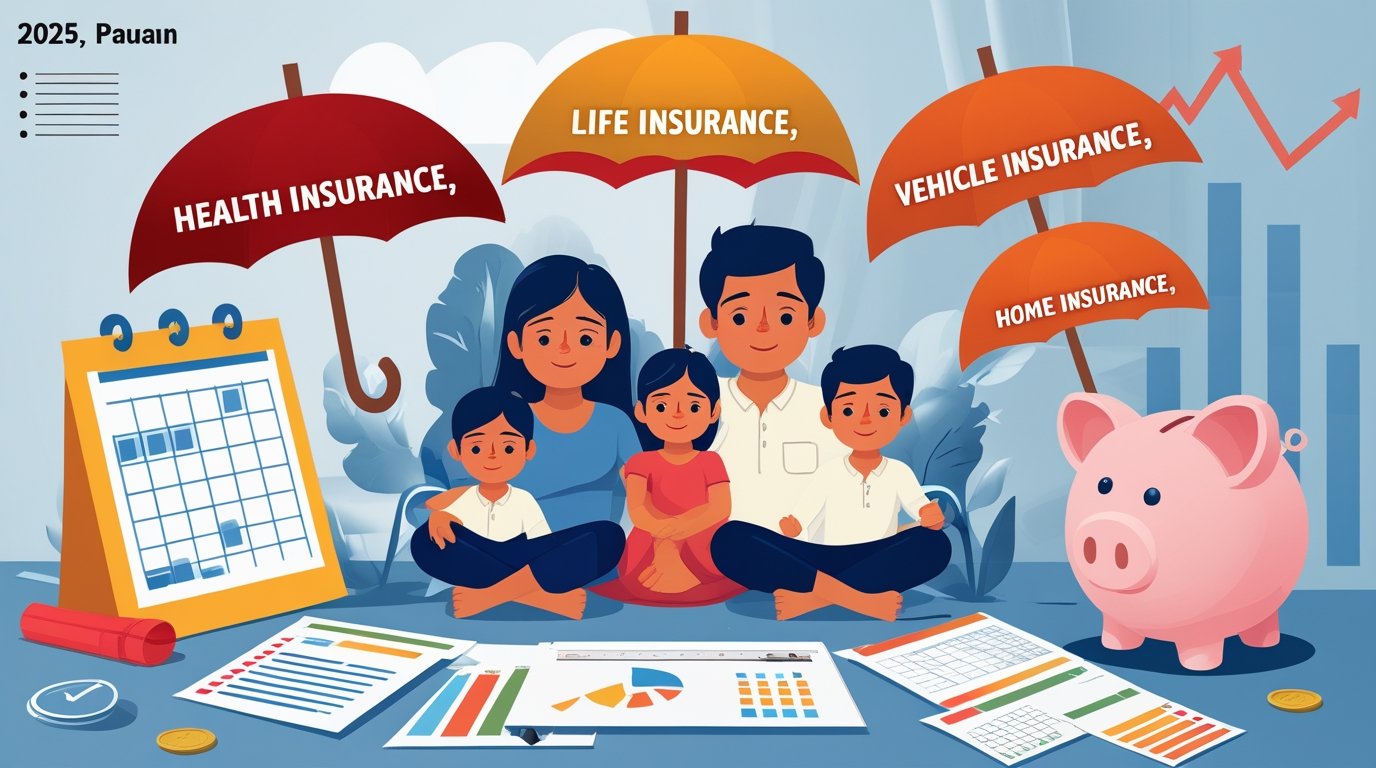Financial uncertainty can feel like walking a tightrope without a net. A single unexpected event—illness, accident, or property loss—can derail years of careful saving. That’s where insurance in financial planning comes in, acting as a safety net to protect your wealth and peace of mind. In 2025, with rising healthcare costs and economic shifts, insurance is more critical than ever. This article explores how insurance fits into your financial plan, offering actionable strategies, real-world examples, and the latest trends to help you thrive.
Why Insurance is a Cornerstone of Financial Planning
Insurance isn’t just a precaution; it’s a strategic tool to safeguard your financial goals. A 2024 report by the Insurance Information Institute found that 68% of Americans faced financial stress due to inadequate coverage. By integrating insurance in financial planning, you protect against risks like medical emergencies, property damage, or income loss, ensuring your savings and investments stay intact.
This guide covers key insurance types, their benefits, and how to choose the right policies in 2025. Let’s dive in.
1. Understanding Key Insurance Types
Life Insurance: Securing Your Family’s Future
Life insurance ensures your loved ones are financially protected if you pass away. It covers debts, living expenses, or future goals like college tuition.
- Term Life: Affordable coverage for a set period (e.g., 20 years). Ideal for young families.
- Whole Life: Permanent coverage with a savings component. Higher premiums but lifelong protection.
- Universal Life: Flexible premiums and benefits, adjusting to your financial needs.
Example: Sarah, a 35-year-old single mother, bought a $500,000 term life policy for $30/month. When she passed unexpectedly in 2024, the payout covered her daughter’s education and mortgage.
Health Insurance: Managing Medical Costs
With healthcare costs rising 5.2% annually (2025 CMS data), health insurance is non-negotiable. It covers hospital stays, doctor visits, and prescriptions.
- Choose the Right Plan: HMOs are cost-effective but restrictive; PPOs offer flexibility at a higher cost.
- HSAs: Pair with high-deductible plans to save pre-tax dollars for medical expenses.
Case Study: John, a freelancer, opted for a high-deductible plan with an HSA. In 2024, he saved $2,000 tax-free, covering an unexpected surgery.
Disability Insurance: Protecting Your Income
If an injury or illness prevents you from working, disability insurance replaces 60-70% of your income.
- Short-Term: Covers 3-6 months of disability.
- Long-Term: Provides benefits for years or until retirement.
Resource: Learn more at Social Security Administration.
Property and Casualty Insurance: Safeguarding Assets
Homeowners, renters, or auto insurance protects your property and liability.
- Homeowners: Covers home damage and personal liability. Bundle with flood insurance in high-risk areas.
- Auto: Required in most states, it covers accidents and repairs.
2025 Tip: New AI-driven insurance apps like Lemonade offer instant quotes and claims processing. Explore Lemonade.
2. How Insurance Fits into Financial Planning
Aligning Insurance with Financial Goals
Insurance supports your broader financial plan by reducing risks that could disrupt your savings or investments.
- Protect Savings: A single hospital stay can cost $10,000+. Health insurance prevents dipping into your emergency fund.
- Preserve Investments: Life or disability insurance ensures your family’s financial stability, protecting long-term goals like retirement.
- Reduce Debt Risk: Insurance payouts can cover debts, preventing financial strain on loved ones.
Example: Maria, a small business owner, used disability insurance to cover $3,000 monthly expenses during a 2024 injury, preserving her retirement savings.
Budgeting for Insurance Premiums
Incorporate premiums into your budget without compromising other goals.
- Prioritize Coverage: Start with health and life insurance, then add property or disability as income allows.
- Shop Around: Compare quotes from providers like State Farm or Geico to save 10-20% on premiums.
- Bundle Policies: Combine auto and homeowners insurance for discounts up to 25%.
3. Choosing the Right Insurance in 2025
Assessing Your Needs
Your life stage, income, and risks determine your insurance needs.
- Young Professionals: Focus on health and renters insurance, plus term life if you have dependents.
- Families: Prioritize life, health, and homeowners insurance to protect assets and loved ones.
- Retirees: Consider long-term care insurance to cover nursing home costs, averaging $8,000/month in 2025.
Tool Tip: Use calculators from Policygenius to estimate coverage needs.
Working with Professionals
An insurance agent or financial planner can tailor policies to your goals.
- Independent Agents: Offer quotes from multiple providers, saving time and money.
- Financial Planners: Integrate insurance into your broader financial strategy.
Case Study: Tom, a retiree, worked with a planner in 2024 to add long-term care insurance, saving $15,000 annually on potential care costs.
4. What’s New in Insurance for 2025
- AI-Driven Claims: Insurers like Allstate use AI to process claims 30% faster, improving customer experience.
- Climate Risk Policies: Flood and wildfire insurance demand rises with extreme weather. New providers offer affordable add-ons.
- Telehealth Integration: Health plans now include free telehealth services, reducing out-of-pocket costs.
Comparison Table: Insurance Types for Financial Planning
| Insurance Type | Best For | Average Cost (2025) | Pros | Cons |
|---|---|---|---|---|
| Term Life | Young families, tight budgets | $20-50/month | Affordable, high coverage | Temporary, no cash value |
| Whole Life | Long-term security | $100-300/month | Lifelong coverage, savings | High premiums |
| Health (PPO) | Flexible medical access | $400-600/month | Wide provider network | Costly premiums |
| Disability | Income protection | $50-150/month | Replaces income during disability | Limited coverage periods |
Image Suggestion: A family reviewing insurance documents at a table, symbolizing financial security.
FAQ Section
Why is insurance important in financial planning?
Insurance in financial planning protects your wealth from unexpected events. Health insurance covers medical bills, life insurance secures your family’s future, and disability insurance replaces lost income. For example, a $10,000 hospital bill could wipe out savings without coverage. By budgeting for premiums (e.g., $50/month for term life), you ensure financial stability. Compare quotes on Policygenius and prioritize coverage based on your life stage.
How much life insurance do I need in 2025?
Calculate 10-15 times your annual income, plus debts and future expenses. For a $50,000 earner with a $200,000 mortgage, aim for $700,000-$950,000 in coverage. Term life is cost-effective ($30/month for $500,000), while whole life suits long

